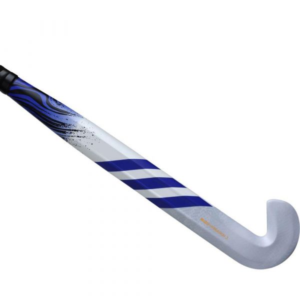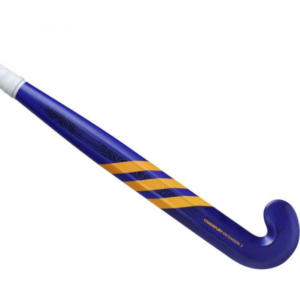Stick Basics
Sorry, lefties — there is no such thing as a lefthanded field hockey stick. The bottom of the stick, called the toe, has a rounded edge facing the right and a flat surface facing the left. The flat surface is used to hit the ball. The stick is controlled by the right hand, which should be placed at the base of the grip. The left hand is positioned at the top of the stick and is used to turn the stick.
Stick Weight & Positioning
Most players prefer to use the mediumweight sticks. Forwards, however, generally use the lighter sticks for increased maneuverability and control. Defenders often favor heavier sticks that produce harder hits. Midfielders prefer the mediumweight sticks so they have both maneuverability and hard hits.
Beginners who haven’t decided on a position will be best served by choosing a mediumweight stick. This weight works well for any position. Here is the weight breakdown for sticks (in ounces):
- Light stick weight: 18 oz to 19 oz
- Medium stick weight: 19 oz to 22 oz
- Heavy stick weight: 22 oz to 25.9 oz
Materials & Stiffness
Wood field hockey sticks are made primarily of mulberry or hickory. Composite and fiberglass sticks are also legal and are predominantly used at the high school, collegiate, and Olympic and World Championship levels. The materials used in composite sticks help generate more power for hits and are used to increase durability and enhance flexibility.
Beginners regularly go for more flexible sticks (wood sticks) to help absorb shock.
Advanced players usually prefer stiffer sticks (composite sticks) for increased power.
Those who plan on continuing with the sport should buy composites; they are lighter, produce more power on every hit, and last longer.
Stick Length
Height often dictates the length of a player’s stick. Just the same, players will look for the longest stick that they can comfortable handle; the longer the stick, the longer the reach and the greater the advantage. The size range begins at 26inch youth sticks and goes up to 38inch sticks for tall, experienced players.
This chart matches player height with corresponding stick lengths.
|
Player Height
|
Stick Length
|
|
Up to 4 feet
|
26 inches
|
|
4 feet to 4 feet, 3 inches
|
28 inches
|
|
4 feet, 4 inches to 4 feet, 6 inches
|
32 inches
|
|
4 feet, 7 inches to 5 feet
|
34 inches
|
|
5 feet, 1 inch to 5 feet, 3 inches
|
5 inches
|
|
5 feet, 4 inches to 5 feet, 6 inches
|
36 inches
|
|
5 feet, 7 inches to 5 feet, 8 inches
|
37 inches
|
|
5 feet, 9 inches +
|
38 inches
|
 Toe Style
Toe Style
The toe is the bottom part of the stick that touches the ground and strikes the ball. The shape will vary depending on
player positions and style of play. Players who haven’t figured out their field position should buy miditoe style sticks. This style stick has the benefits of both the shorti and hook: It’s good for dribbling and for stopping. Listed below are the four main toe styles:
Hook
- Popular with defensive players due to the large stopping surface; this helps receive the ball
- Jshaped construction
- Particularly good on grass surfaces
Maxi
- Large receiving area and greater hitting power
- Defensive players prefer this stick style
Midi
- Large hook surface and length
- Greater hitting and stopping area to aid receiving, flicking, and reverse stick play
- Best for beginners and midfield players
Shorti
- Designed to allow quick movement around the ball
- Good for dribbling
- Generally used by offensive players
Please follow and like us:

 Toe Style
Toe Style



What others are saying
There are no contributions yet.